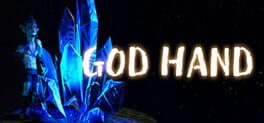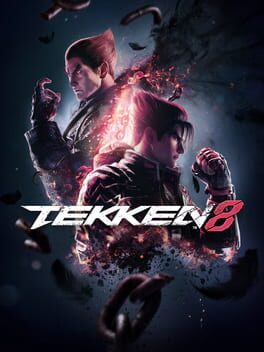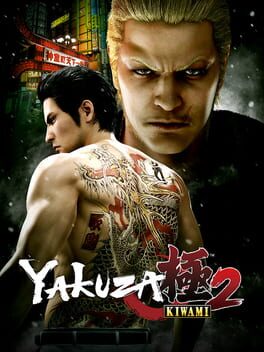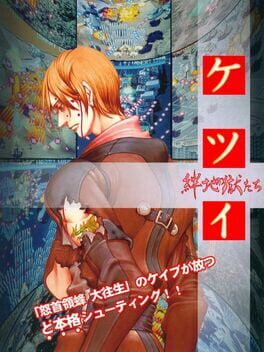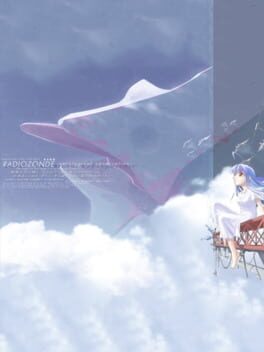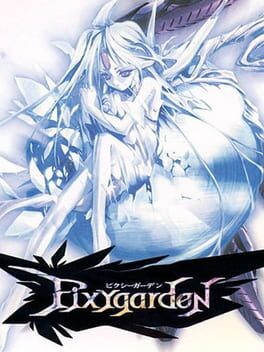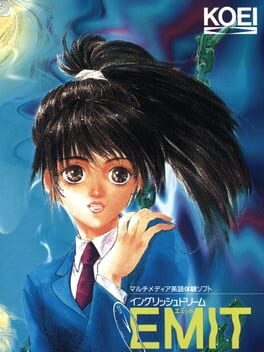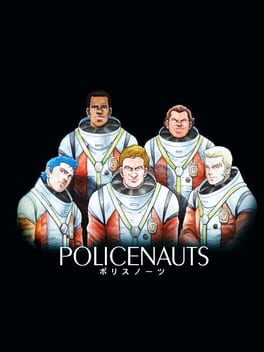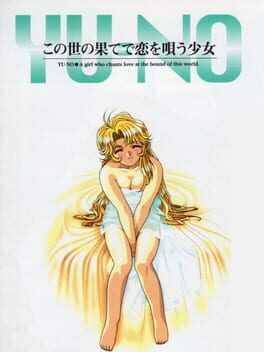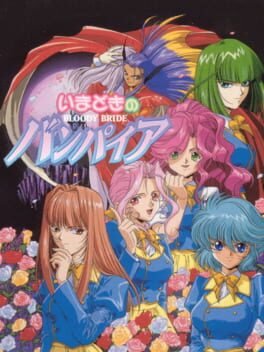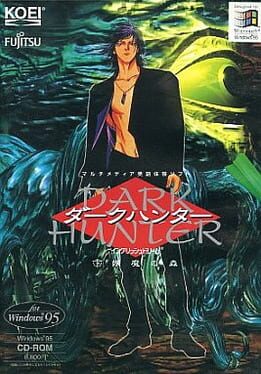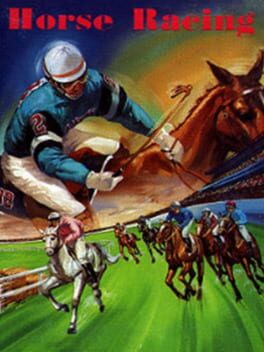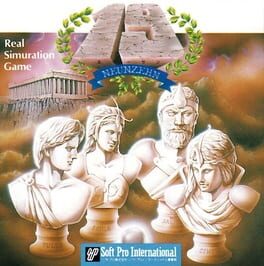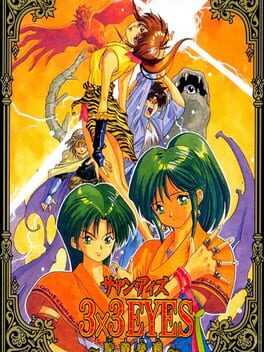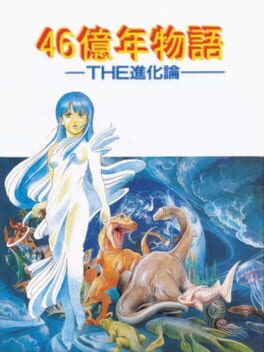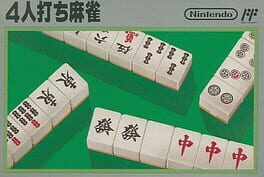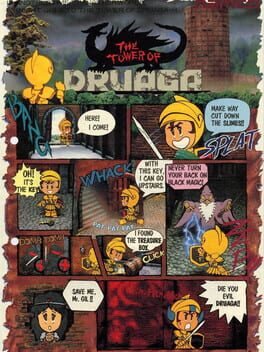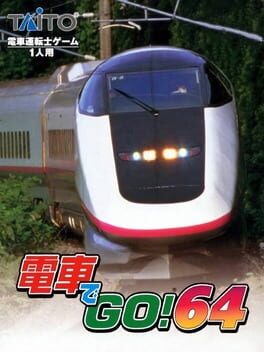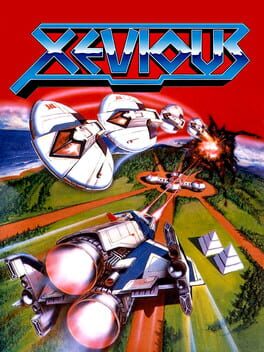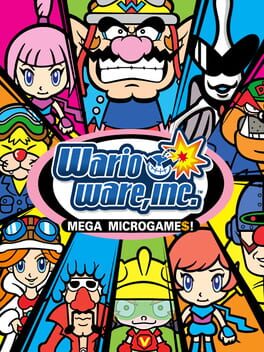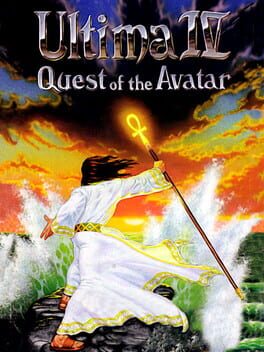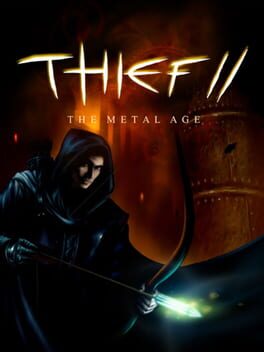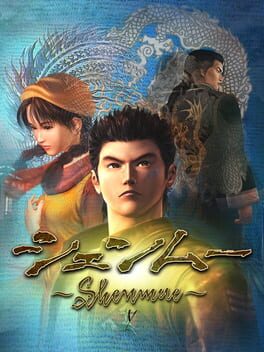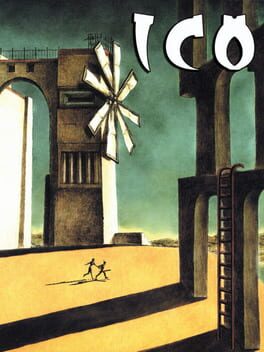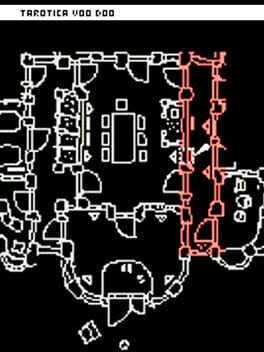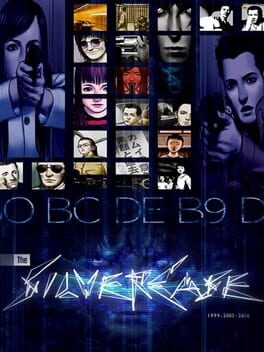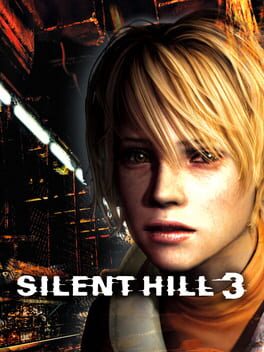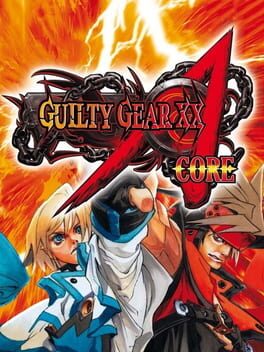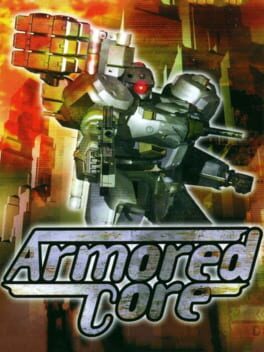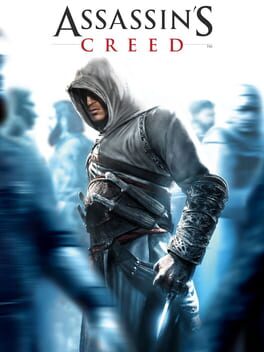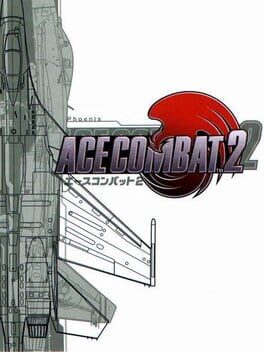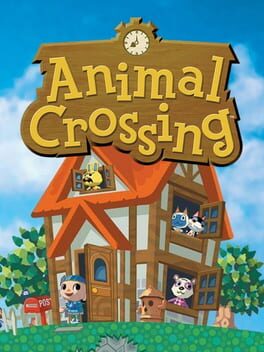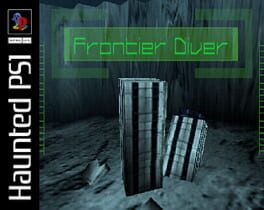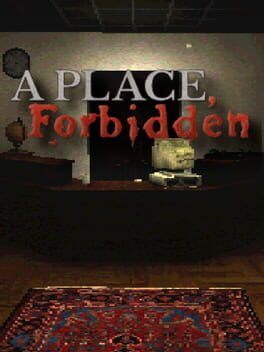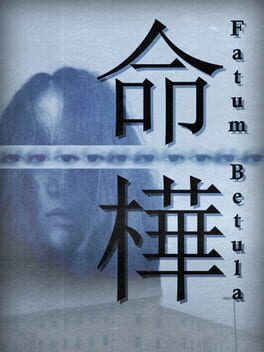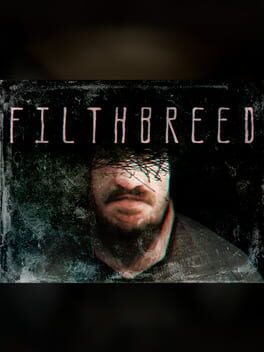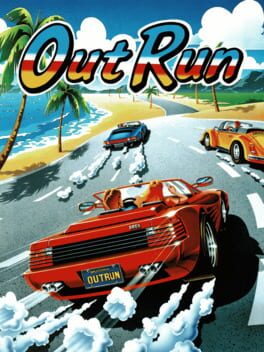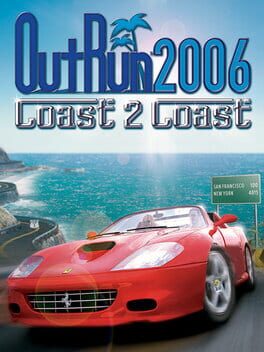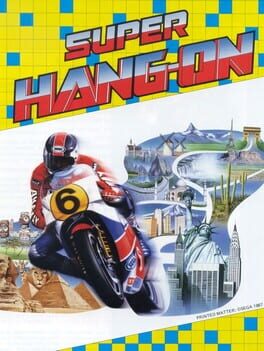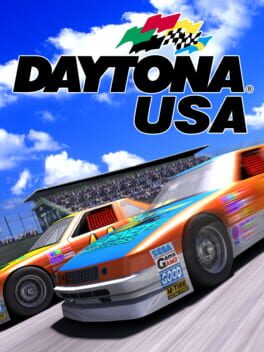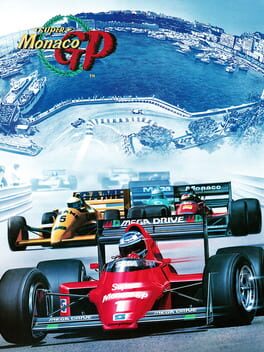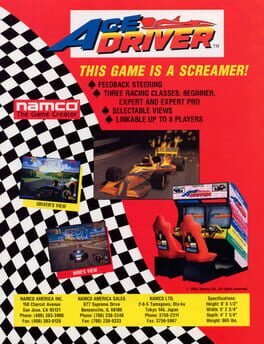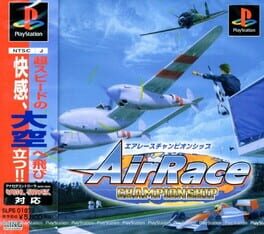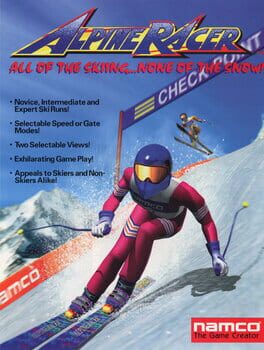Maeglynx
196 reviews liked by Maeglynx
Elden Ring
2022
God Hand
2019
EbiKore+ Amagami
2011
An incredible example of creating a connection between player and character, I have never felt so genuinely for someone in a game as I have (repeatedly!) in Amagami.
Kadokawa goes a different route than the classic stat-based approach of dating sims like Tokimeki Memorial, removing the genre's addictive number crunching and detailed planning in favor for systems more emotional. Here, life is represented by a great web-like grid that grows and grows the more memories you make, but also acts as a perpetul reminder that you can't experience everything in life; you will have missed opportunities and regrets; you'll look forward to things only for them not to happen; as you make connections and old ones deepen, you'll lose others. It is nothing less than a mechanical metaphor for life in all its complexity. Looking back on it as you near the end, you see your past in its patterns, marvel with nostalgia at how much has happened without you even noticing it.
I could talk about the grid until I sound like some crazed conspiratorial weirdo (and I have....to myself, which doesn't help the image) but the real heart here is the characters. And what characters! Wonderful, multi-dimensional people who buck stereotypes. They are heightened, yes, but act with complexity and a sense of realism. They hide parts of themselves big and small; they have surprising interests and talk about the mundane or pointless; they laugh. And brought to life with writing that is quietly stunning in how effective it is, it takes only a very little amount of time before eyes darting to the side become the most romantically charged thing you've ever seen in a video game. There are so many moments here that should, by all accounts, be minor, pointless things, but instead are overwhelming.
A perfect fusion of gameplay and story. An all-time great example of how games don't have to be action-packed, mechanically complex, or even all that interactive. Amagami is a beautiful work of empathy and, I think, one of the greatest games ever made.
also this version has a bonus mahjong story mode so like, triple the points. 15 stars.
Kadokawa goes a different route than the classic stat-based approach of dating sims like Tokimeki Memorial, removing the genre's addictive number crunching and detailed planning in favor for systems more emotional. Here, life is represented by a great web-like grid that grows and grows the more memories you make, but also acts as a perpetul reminder that you can't experience everything in life; you will have missed opportunities and regrets; you'll look forward to things only for them not to happen; as you make connections and old ones deepen, you'll lose others. It is nothing less than a mechanical metaphor for life in all its complexity. Looking back on it as you near the end, you see your past in its patterns, marvel with nostalgia at how much has happened without you even noticing it.
I could talk about the grid until I sound like some crazed conspiratorial weirdo (and I have....to myself, which doesn't help the image) but the real heart here is the characters. And what characters! Wonderful, multi-dimensional people who buck stereotypes. They are heightened, yes, but act with complexity and a sense of realism. They hide parts of themselves big and small; they have surprising interests and talk about the mundane or pointless; they laugh. And brought to life with writing that is quietly stunning in how effective it is, it takes only a very little amount of time before eyes darting to the side become the most romantically charged thing you've ever seen in a video game. There are so many moments here that should, by all accounts, be minor, pointless things, but instead are overwhelming.
A perfect fusion of gameplay and story. An all-time great example of how games don't have to be action-packed, mechanically complex, or even all that interactive. Amagami is a beautiful work of empathy and, I think, one of the greatest games ever made.
also this version has a bonus mahjong story mode so like, triple the points. 15 stars.
Sea of Stars
2023
This review contains spoilers
I am not immune to propaganda. Show me a trailer for an indie JRPG featuring scripted encounters on the field maps, dual techs, and guest tracks by Yasunori Mitsuda, and I'll go "oh, a Chrono Trigger inspired indie JRPG, I sure hope they actually learned the right lessons from the classics" and drop $30 to see if they did.
They didn't.
(Full spoilers for both Sea of Stars and Chrono Trigger.)
I criticized Chained Echoes for being overly derivative of various golden age JRPGs, but to its credit: it feels purposeful in its imitation. It re-uses elements from older games wholecloth, smothering its individual identity under a quilt of influences, but I can appreciate the craftsmanship and intent behind it. It's clearly made from a place of love.
I don't get that vibe from Sea of Stars at all. I complained about some tediously self-aware dialogue in the early hours, and while it only dips down quite that low once or twice more, it colored the entire game with a feeling of self-aggrandizement. In fairness to what I wrote then (and based on a lengthy speech in the hidden Dev Room) it sounds like the devs truly did want to make a JRPG and pay homage to their childhoods. But to me, harsh as it may be, Sea of Stars feels like the devs thought making a JRPG was easy: just copy the greats (specifically, Chrono Trigger), and it'll work out. Based on sales and reviews, it is working out for them, but I'm the freak out here with highly specific ideas about why Chrono Trigger was good and Sea of Stars doesn't seem to agree with my assessment. This inherent friction lasted across the game's entire 30-35 hours.
You play as Zale and Valere, paired Chosen Ones whose innate Sun/Moon powers allow them to do battle against Dwellers, ancient beasts left behind when the villainous Fleshmancer set his sights on this plane of reality. He has since moved on to another world, but Dwellers left unchecked evolve into World Eaters, planar monstrosities that do exactly what it sounds like they do. The Solstice Warriors must hold a never-ending vigil in case previous generations missed a Dweller, battling them when their powers peak during an eclipse.
Joining them is Garl the Warrior Cook, the pair's childhood friend and the only character with anything resembling charisma; Seraï, a masked assassin of mysterious origin; Resh'an, a former companion of The Fleshmancer; and B'st, an amorphous pink cloud with almost no relevance to the plot a-la Chu-Chu from Xenogears.
Battles happen on the field map, like Chrono Trigger, and their main feature is essentially the Break system from Octopath Traveler. When a monster is charging up a special move, they gain "locks" that can only be broken by hitting them with specific types of damage; break them all, and they lose their turn. It's frequently impossible to break all the locks - you simply do not have the action economy to put out that many hits - and so you're usually playing triage regarding which special move you're willing to take to the face.
The battle system also takes a page from Super Mario RPG and includes timed hits and blocks for every attack. Tutorial messages insist to not worry about these and just think of them as bonus damage, but most of your attacks (especially multi-target spells) won't function properly unless you're nailing the timing. You'll often still do some damage, but the number of hits is the most important thing when you're dealing with Locks. There is an accessibility option (purchasable with in-game currency) to make timed hits always land in exchange for lower damage, but that only works for basic attacks.
Only a handful of skills have a message explaining when to push the button, and for the rest? Tough luck, figure it out. It's inconsistent at best and opaque at worst. And I mean literally opaque: because of how the field maps and graphics are constructed, character sprites (especially Seraï) often end up entirely offscreen or covered by other sprites when you're meant to time a press. This wasn't a problem in SMRPG or Mario & Luigi because those had bespoke battle screens with fairly consistent framing for timed hits; the concept isn't very compatible with CT style battles without a way to maintain that consistency.
I legitimately enjoyed the battle system for about the first 30% or so of the game, at which point the startling lack of variety in the battle options began to chafe. Every character has a basic attack, a mere three skills, and a Final Fantasy summon-like Ultimate attack that requires a bar to charge up. There's around a dozen "Combo" moves (read: Dual Techs) across the entire party, but the meter to use them charges so slowly they might as well only exist during boss battles. Your maximum MP caps at around 30 (at the max level, which requires a lot of grinding), skills cost anywhere between 4 and 11, and your potion inventory is limited to 10 items, meaning you're going to almost always rely on basic attacks - which recover 3 MP on a hit - for most battles. Landing a basic attack lets you imbue another basic attack with a character's inherent elemental attribute, which is the only way to break most locks once you're in the mid-game.
Play SMRPG sometime (perhaps the upcoming remake, even) and you'll figure out quick that Timed Hits are cool because if you do them properly it makes battles faster. You aren't trying to get 100 Super Jumps in every single battle because that would be exhausting and slow. Sure, in Chrono Trigger I'm solving 80% of encounters with the same multi-target spells, but that also means they're over in less than a minute. In Sea of Stars, if I mess up an early button press with Moonerang or Venom Flurry, it might not even hit every enemy, which probably means I won't break the locks I need to, which means they'll do their long spell animation. A trash mob battle will probably take two full minutes of me carefully trying to land my timed hits and manage my MP. That shit adds up.
I wouldn't quite go so far as to say Sea of Stars disrespects your time, but a lot of shit adds up. The backgrounds and sprite work are universally great - really beautiful stuff, great animations - but there are tightropes/beams scattered everywhere around the game world, seemingly placed only so you're forced to slow down and look at the backgrounds. From a purely quality of life standpoint, I don't know why you have to hold the button for so long when cooking something, especially if it's a higher-tier restorative. The overworld walk speed is agonizing. The narrative flails in several bizarre directions, only cohering in the broadest possible sense of "we need to beat the bad guy".
Comparatively, Chrono Trigger never stops moving. Your objectives in CT are clearly signposted and make logical sense, even when they string together into longer sequences. To save the world from the Bad Future, we need to defeat the big monster, and we learn the monster was summoned by an evil wizard. To defeat the evil wizard, we need the magic sword, but the sword is broken. To re-forge the sword, we need an ancient material, so off to prehistory we go!
It may sound tedious when written out this way, but the crucial element is that this only takes something like 4 or 5 hours. You're never stuck in any individual location longer than 45-60 minutes, and that's if you stop to grind (which you don't need to). Working at a leisurely pace, you can 100% Chrono Trigger in somewhere between 15 and 20 hours. My most recent playthrough - in which I deliberately walked slowly, grinded out levels, and talked to every NPC for the sake of recording footage - clocked in at about 17.
Sea of Stars doesn't stop introducing new plot elements until the middle of the end credits and makes little effort to tie them together in a cohesive way, instead relying on the inherent fantasy of the setting to smooth over any bumps. For example, take The Sleeper, a massive dragon that once ravaged the world before being sent into an eternal slumber. It explicitly isn't a Dweller, being little more than a curiosity on the overworld map. It bears no relevance to the plot other than as a mid-game side objective to earn the privilege to progress the actual story.
Zale and Valere, despite having speaking roles, do not possess an iota of personality between them; they are generically heroic and valiant and stop at every stage along their quest to help the weak and downtrodden as JRPG Protagonists are wont to do. The idea that Garl should not join them on their dangerous journey - as he is a mere normie - is raised once or twice, but ultimately disregarded due to Garl's endless luck and pluck. He barrels through any possible pathos or character development by simply being the Fun Fat Guy at all times, whether or not the next step follows logically.
No less than three times do the characters visit some kind of Oracle or Seer who reads the future and literally tells them what is going to happen later in the story, sometimes cryptically and sometimes giving explicit instructions. At one point a character awakens from a near-death experience having suddenly gained the knowledge of how to restart the stalled plot, launching into a multi-stage quest that has no logical ties to the party's objective. It's just progression, things happening because something has to happen between points A and B.
Another example: a late game dungeon introduces a race of bird wizards complete with ominous side-flashes to their nefarious scheming atop their evil thrones. They are relevant for only that dungeon, which is broadly just an obstacle in the way of the party's actual objective. I don't understand the intent. Is it supposed to be funny that this guy looks like Necromancer Daffy Duck? If so, why is the story genuinely trying to convince me of the sorrow of their plight and how it relates to the lore (in a way that also isn't relevant to the current events of the plot since it's shit that happened like 10,000 years ago)? How am I meant to react to this? Why is it here, in the final stretch of the story? I was asking these kinds of questions the entire game.
Presumably, the plot is like this because it's trying to imitate JRPGs of the time, which had a reputation for sending you on strings of seemingly random errands to defeat monsters or fetch items. You know what game doesn't do that? Chrono Trigger! The game Sea of Stars is obviously trying to position itself as a successor to!
Is it fair that I criticize the Solstice Warriors for being flat characters when Crono literally does not speak and his party consists of a bunch of genre caricatures? Yes, because CT doesn't try to be more than that. There's no need for wink-wink "did you know you're playing a JRPG? eh, ehhh?? aren't they so wacky with plots that barely make sense bro???" writing in Chrono Trigger because it knows that you know that it knows that you know you're playing a damn JRPG. It's got Akira Toriyama art like Dragon Quest! It says Squaresoft on the cover, those dudes made Final Fantasy!
You're on a roller coaster through time and space! You're here because you want to see knights and robots and cavemen do exactly what knights and robots and cavemen do. Of course Ayla the weirdly sexy cavewoman will say "what is raw-boot? me no understand" after Robo the robot shoots dino-men with his laser beams. It's comedic melodrama, it's operatic in a way that leverages genre familiarity.
Sea of Stars isn't willing to fully commit to this approach, undercutting its own pathos with half-measures and naked imitation. I'd be so much more willing to accept the sudden-yet-inevitable betrayal at the end of the first act if the game didn't then whip around and say "haha, we sure did the thing, huh?" Yeah, I saw. We both clearly know that you're not being clever about it, so why is it in the game?
The answer is usually "because it was in Chrono Trigger", without any examination of what made it work. Like, okay, everybody knows Chrono Trigger is "a good game", but do you know why it's a good game? I could see someone playing it and just thinking, "I don't get it, this is an incredibly generic JRPG," but what you have to understand is that CT is an immaculately constructed generic JRPG. Simply using the same ingredients isn't going to create the same result.
Take the most famous twist of CT: at a critical moment, silent player avatar Crono sacrifices his life to get the rest of the cast to safety, removing him from the party lineup. In the context of 1995, this is a shocking, borderline 4th-wall-breaking twist. Permanent party member death wasn't unheard of - take FFIV or FFV - but the main character? Crono was the mandatory first slot of the party, a jack-of-all-trades mechanical role akin to a DQ Hero. Even though he doesn't have a personality, Crono's consistent presence and the story's inherent melodrama lend a tangible feeling of loss.
Using the power of time travel, the player can undertake a sizeable sidequest to bring Crono back to life, replacing him at the instant of his death with a lifeless doll. He rejoins the party, no longer a mandatory member of the lineup. At this point in the game, you arguably don't even want to bring him along on quests, because he still doesn't have dialogue. Crucially, the entire quest is optional; the first time I played CT, I accidentally did the entire final dungeon (also optional!) first, assuming it was a necessary step.
Sea of Stars tries to do this with Garl. He takes a fatal blow for Zale and Valere then dictates the plot for the next two hours of the game while living on literal Borrowed Time. You journey to an ancient island floating in the sky (sick Chrono Trigger reference bro!) and split the party to pursue multiple objectives in multiple dungeons, culminating in a whole sequence complete with bespoke comic panels of the party mourning their best friend for months offscreen.
This didn't work because I, the player, had no attachment to the character. Garl is the least mechanically useful party member, dealing the same damage type as Valere but without any elemental type to break locks; his heal skill is more expensive than Zale's and his repositioning skill is unnecessary once you have all-target attacks. I dropped him for Seraï at first opportunity and literally never put him back in the main lineup.
Nor do I buy into Zale and Valere's feelings. Protecting Garl is supposed to be one of their main motivations - it's a major scene in the prologue, and leads to an entire dungeon detour in the first act - but they haven't put forth any genuine effort to prevent him from hurling himself into danger's way throughout the game. As noted, he just repeatedly barrels his way through the plot by demanding it continue, even after he's fucking dead.
The true ending of Sea of Stars requires beating the game once, then completing numerous optional objectives which lead to... can you guess? Going back in time, replacing Garl at the instant of his fatal wound with a body double (which means B'st was pretending to be Garl - someone he's never met - during that entire segment, a completely absurd notion), and pulling him back into the present. You do another lengthy sidequest to get an invitation to a fancy restaurant, and then you can fight the true final boss, again, because Garl simply demands it when you get there.
If this CT retread had to be in the game, it would have obviously been better served by Garl being the main player character; go all the way with the imitation. Any vague gesturing the narrative makes towards not having to be The Chosen One to still fight for justice would carry more weight if you weren't playing as the Solstice Warriors, instead scrambling to keep up with them as the worst party member. As things stand, it's just a big ol' reference to a better game, a transparent play for Real Stakes that rings hollow.
An even more egregious example is The Big Thing at the start of Act 3, once the cast finally sets sail upon the eponymous Sea of Stars. Leaving their world of fantasy and magic, they enter a post-apocalyptic sci-fi world, complete with a brief graphics shift into 3D and a full UI overhaul. It's intended to be a shocking twist, a mind-blowing reveal... but it doesn't work, because A) it's a blatant crib of CT, and B) it's all in service to a punchline.
In Chrono Trigger, once the game has fully established the time travel concept by sending you to 600 AD and back (about three hours of gameplay), the party is forced to flee into an unknown time gate. It spits them out to 2300 AD, a wrecked hell world in the depths of a nuclear winter. Here, the party discovers an archive computer recording that sets up their goal for the entire rest of the game: prevent the apocalypse by stopping Lavos, a titanic creature buried deep within the earth.
It's important that this happens at the beginning of the game. You're expecting some form of going to the future to see goofy robots - it's a natural extension of time travel as a plot device - but 2300 AD is a genuine shock in the moment. It serves as a constant reminder of the stakes: this is the bad future, and you're trying to stop it from ever happening. After gallivanting through medieval times, the contrast really works.
In Sea of Stars, you probably aren't expecting to suddenly fight a robot when you're chasing The Fleshmancer across worlds. It's a potentially cool swerve, but what's actually gained by having the final act be in sci-fi land other than some kind of "dang, didn't see that coming" factor? He isn't even actually in control of the robots or anything, he just hides his castle here because... well, it's unclear why, because even once you restore the sun and moon and fight him in the True Ending, he only seems momentarily inconvenienced.
But it sure is a CT reference! And it's also a joke, because your mysterious sometimes-assassin-sometimes-swashbuckler companion Seraï reveals that this is her home world, pulling off her mask to reveal her metallic endoskeleton. You see, she used to be human, but had her soul chewed up and put into this mechanical body. She is a literal Ninja Pirate Zombie Robot.
You know! Ninja Pirate Zombie Robot! Like TVTropes, lol? Wacky JRPG party members!
How do you expect to maintain any investment after that? There's like four more dungeons in sci-fi world - including aforementioned Necromancer Daffy - and I just couldn't give a shit about any of it. The post-apoc stuff doesn't add any stakes, because we already know the Fleshmancer has ruined countless worlds and we're just chasing him to this one in particular because Seraï asked us to (and I guess they want revenge for Garl). I wasn't having fun, I was just annoyed.
I'm baffled. Sea of Stars clearly knows how to outwardly present itself as a quality JRPG. At a glance, the game looks like everything I could want: beautiful artwork, smooth gameplay, fun characters. Something that gets why I fell in love with the genre in the first place, and why I hold up Chrono Trigger as its crown jewel.
But it just isn't that, at least not to me, and that's... I dunno, existentially troubling? Based on the reviews I've seen, I'm clearly in the minority for feeling this way. I do believe the dev team and all of these players also love JRPGs. But if they do, it must be in a way fundamentally different from the way I do, because otherwise I simply don't understand the creative choices in Sea of Stars. I want more than this.
Maybe one day, hopefully sooner than later, we'll get the Disco Elysium of JRPGs, but today sure isn't that day.
They didn't.
(Full spoilers for both Sea of Stars and Chrono Trigger.)
I criticized Chained Echoes for being overly derivative of various golden age JRPGs, but to its credit: it feels purposeful in its imitation. It re-uses elements from older games wholecloth, smothering its individual identity under a quilt of influences, but I can appreciate the craftsmanship and intent behind it. It's clearly made from a place of love.
I don't get that vibe from Sea of Stars at all. I complained about some tediously self-aware dialogue in the early hours, and while it only dips down quite that low once or twice more, it colored the entire game with a feeling of self-aggrandizement. In fairness to what I wrote then (and based on a lengthy speech in the hidden Dev Room) it sounds like the devs truly did want to make a JRPG and pay homage to their childhoods. But to me, harsh as it may be, Sea of Stars feels like the devs thought making a JRPG was easy: just copy the greats (specifically, Chrono Trigger), and it'll work out. Based on sales and reviews, it is working out for them, but I'm the freak out here with highly specific ideas about why Chrono Trigger was good and Sea of Stars doesn't seem to agree with my assessment. This inherent friction lasted across the game's entire 30-35 hours.
You play as Zale and Valere, paired Chosen Ones whose innate Sun/Moon powers allow them to do battle against Dwellers, ancient beasts left behind when the villainous Fleshmancer set his sights on this plane of reality. He has since moved on to another world, but Dwellers left unchecked evolve into World Eaters, planar monstrosities that do exactly what it sounds like they do. The Solstice Warriors must hold a never-ending vigil in case previous generations missed a Dweller, battling them when their powers peak during an eclipse.
Joining them is Garl the Warrior Cook, the pair's childhood friend and the only character with anything resembling charisma; Seraï, a masked assassin of mysterious origin; Resh'an, a former companion of The Fleshmancer; and B'st, an amorphous pink cloud with almost no relevance to the plot a-la Chu-Chu from Xenogears.
Battles happen on the field map, like Chrono Trigger, and their main feature is essentially the Break system from Octopath Traveler. When a monster is charging up a special move, they gain "locks" that can only be broken by hitting them with specific types of damage; break them all, and they lose their turn. It's frequently impossible to break all the locks - you simply do not have the action economy to put out that many hits - and so you're usually playing triage regarding which special move you're willing to take to the face.
The battle system also takes a page from Super Mario RPG and includes timed hits and blocks for every attack. Tutorial messages insist to not worry about these and just think of them as bonus damage, but most of your attacks (especially multi-target spells) won't function properly unless you're nailing the timing. You'll often still do some damage, but the number of hits is the most important thing when you're dealing with Locks. There is an accessibility option (purchasable with in-game currency) to make timed hits always land in exchange for lower damage, but that only works for basic attacks.
Only a handful of skills have a message explaining when to push the button, and for the rest? Tough luck, figure it out. It's inconsistent at best and opaque at worst. And I mean literally opaque: because of how the field maps and graphics are constructed, character sprites (especially Seraï) often end up entirely offscreen or covered by other sprites when you're meant to time a press. This wasn't a problem in SMRPG or Mario & Luigi because those had bespoke battle screens with fairly consistent framing for timed hits; the concept isn't very compatible with CT style battles without a way to maintain that consistency.
I legitimately enjoyed the battle system for about the first 30% or so of the game, at which point the startling lack of variety in the battle options began to chafe. Every character has a basic attack, a mere three skills, and a Final Fantasy summon-like Ultimate attack that requires a bar to charge up. There's around a dozen "Combo" moves (read: Dual Techs) across the entire party, but the meter to use them charges so slowly they might as well only exist during boss battles. Your maximum MP caps at around 30 (at the max level, which requires a lot of grinding), skills cost anywhere between 4 and 11, and your potion inventory is limited to 10 items, meaning you're going to almost always rely on basic attacks - which recover 3 MP on a hit - for most battles. Landing a basic attack lets you imbue another basic attack with a character's inherent elemental attribute, which is the only way to break most locks once you're in the mid-game.
Play SMRPG sometime (perhaps the upcoming remake, even) and you'll figure out quick that Timed Hits are cool because if you do them properly it makes battles faster. You aren't trying to get 100 Super Jumps in every single battle because that would be exhausting and slow. Sure, in Chrono Trigger I'm solving 80% of encounters with the same multi-target spells, but that also means they're over in less than a minute. In Sea of Stars, if I mess up an early button press with Moonerang or Venom Flurry, it might not even hit every enemy, which probably means I won't break the locks I need to, which means they'll do their long spell animation. A trash mob battle will probably take two full minutes of me carefully trying to land my timed hits and manage my MP. That shit adds up.
I wouldn't quite go so far as to say Sea of Stars disrespects your time, but a lot of shit adds up. The backgrounds and sprite work are universally great - really beautiful stuff, great animations - but there are tightropes/beams scattered everywhere around the game world, seemingly placed only so you're forced to slow down and look at the backgrounds. From a purely quality of life standpoint, I don't know why you have to hold the button for so long when cooking something, especially if it's a higher-tier restorative. The overworld walk speed is agonizing. The narrative flails in several bizarre directions, only cohering in the broadest possible sense of "we need to beat the bad guy".
Comparatively, Chrono Trigger never stops moving. Your objectives in CT are clearly signposted and make logical sense, even when they string together into longer sequences. To save the world from the Bad Future, we need to defeat the big monster, and we learn the monster was summoned by an evil wizard. To defeat the evil wizard, we need the magic sword, but the sword is broken. To re-forge the sword, we need an ancient material, so off to prehistory we go!
It may sound tedious when written out this way, but the crucial element is that this only takes something like 4 or 5 hours. You're never stuck in any individual location longer than 45-60 minutes, and that's if you stop to grind (which you don't need to). Working at a leisurely pace, you can 100% Chrono Trigger in somewhere between 15 and 20 hours. My most recent playthrough - in which I deliberately walked slowly, grinded out levels, and talked to every NPC for the sake of recording footage - clocked in at about 17.
Sea of Stars doesn't stop introducing new plot elements until the middle of the end credits and makes little effort to tie them together in a cohesive way, instead relying on the inherent fantasy of the setting to smooth over any bumps. For example, take The Sleeper, a massive dragon that once ravaged the world before being sent into an eternal slumber. It explicitly isn't a Dweller, being little more than a curiosity on the overworld map. It bears no relevance to the plot other than as a mid-game side objective to earn the privilege to progress the actual story.
Zale and Valere, despite having speaking roles, do not possess an iota of personality between them; they are generically heroic and valiant and stop at every stage along their quest to help the weak and downtrodden as JRPG Protagonists are wont to do. The idea that Garl should not join them on their dangerous journey - as he is a mere normie - is raised once or twice, but ultimately disregarded due to Garl's endless luck and pluck. He barrels through any possible pathos or character development by simply being the Fun Fat Guy at all times, whether or not the next step follows logically.
No less than three times do the characters visit some kind of Oracle or Seer who reads the future and literally tells them what is going to happen later in the story, sometimes cryptically and sometimes giving explicit instructions. At one point a character awakens from a near-death experience having suddenly gained the knowledge of how to restart the stalled plot, launching into a multi-stage quest that has no logical ties to the party's objective. It's just progression, things happening because something has to happen between points A and B.
Another example: a late game dungeon introduces a race of bird wizards complete with ominous side-flashes to their nefarious scheming atop their evil thrones. They are relevant for only that dungeon, which is broadly just an obstacle in the way of the party's actual objective. I don't understand the intent. Is it supposed to be funny that this guy looks like Necromancer Daffy Duck? If so, why is the story genuinely trying to convince me of the sorrow of their plight and how it relates to the lore (in a way that also isn't relevant to the current events of the plot since it's shit that happened like 10,000 years ago)? How am I meant to react to this? Why is it here, in the final stretch of the story? I was asking these kinds of questions the entire game.
Presumably, the plot is like this because it's trying to imitate JRPGs of the time, which had a reputation for sending you on strings of seemingly random errands to defeat monsters or fetch items. You know what game doesn't do that? Chrono Trigger! The game Sea of Stars is obviously trying to position itself as a successor to!
Is it fair that I criticize the Solstice Warriors for being flat characters when Crono literally does not speak and his party consists of a bunch of genre caricatures? Yes, because CT doesn't try to be more than that. There's no need for wink-wink "did you know you're playing a JRPG? eh, ehhh?? aren't they so wacky with plots that barely make sense bro???" writing in Chrono Trigger because it knows that you know that it knows that you know you're playing a damn JRPG. It's got Akira Toriyama art like Dragon Quest! It says Squaresoft on the cover, those dudes made Final Fantasy!
You're on a roller coaster through time and space! You're here because you want to see knights and robots and cavemen do exactly what knights and robots and cavemen do. Of course Ayla the weirdly sexy cavewoman will say "what is raw-boot? me no understand" after Robo the robot shoots dino-men with his laser beams. It's comedic melodrama, it's operatic in a way that leverages genre familiarity.
Sea of Stars isn't willing to fully commit to this approach, undercutting its own pathos with half-measures and naked imitation. I'd be so much more willing to accept the sudden-yet-inevitable betrayal at the end of the first act if the game didn't then whip around and say "haha, we sure did the thing, huh?" Yeah, I saw. We both clearly know that you're not being clever about it, so why is it in the game?
The answer is usually "because it was in Chrono Trigger", without any examination of what made it work. Like, okay, everybody knows Chrono Trigger is "a good game", but do you know why it's a good game? I could see someone playing it and just thinking, "I don't get it, this is an incredibly generic JRPG," but what you have to understand is that CT is an immaculately constructed generic JRPG. Simply using the same ingredients isn't going to create the same result.
Take the most famous twist of CT: at a critical moment, silent player avatar Crono sacrifices his life to get the rest of the cast to safety, removing him from the party lineup. In the context of 1995, this is a shocking, borderline 4th-wall-breaking twist. Permanent party member death wasn't unheard of - take FFIV or FFV - but the main character? Crono was the mandatory first slot of the party, a jack-of-all-trades mechanical role akin to a DQ Hero. Even though he doesn't have a personality, Crono's consistent presence and the story's inherent melodrama lend a tangible feeling of loss.
Using the power of time travel, the player can undertake a sizeable sidequest to bring Crono back to life, replacing him at the instant of his death with a lifeless doll. He rejoins the party, no longer a mandatory member of the lineup. At this point in the game, you arguably don't even want to bring him along on quests, because he still doesn't have dialogue. Crucially, the entire quest is optional; the first time I played CT, I accidentally did the entire final dungeon (also optional!) first, assuming it was a necessary step.
Sea of Stars tries to do this with Garl. He takes a fatal blow for Zale and Valere then dictates the plot for the next two hours of the game while living on literal Borrowed Time. You journey to an ancient island floating in the sky (sick Chrono Trigger reference bro!) and split the party to pursue multiple objectives in multiple dungeons, culminating in a whole sequence complete with bespoke comic panels of the party mourning their best friend for months offscreen.
This didn't work because I, the player, had no attachment to the character. Garl is the least mechanically useful party member, dealing the same damage type as Valere but without any elemental type to break locks; his heal skill is more expensive than Zale's and his repositioning skill is unnecessary once you have all-target attacks. I dropped him for Seraï at first opportunity and literally never put him back in the main lineup.
Nor do I buy into Zale and Valere's feelings. Protecting Garl is supposed to be one of their main motivations - it's a major scene in the prologue, and leads to an entire dungeon detour in the first act - but they haven't put forth any genuine effort to prevent him from hurling himself into danger's way throughout the game. As noted, he just repeatedly barrels his way through the plot by demanding it continue, even after he's fucking dead.
The true ending of Sea of Stars requires beating the game once, then completing numerous optional objectives which lead to... can you guess? Going back in time, replacing Garl at the instant of his fatal wound with a body double (which means B'st was pretending to be Garl - someone he's never met - during that entire segment, a completely absurd notion), and pulling him back into the present. You do another lengthy sidequest to get an invitation to a fancy restaurant, and then you can fight the true final boss, again, because Garl simply demands it when you get there.
If this CT retread had to be in the game, it would have obviously been better served by Garl being the main player character; go all the way with the imitation. Any vague gesturing the narrative makes towards not having to be The Chosen One to still fight for justice would carry more weight if you weren't playing as the Solstice Warriors, instead scrambling to keep up with them as the worst party member. As things stand, it's just a big ol' reference to a better game, a transparent play for Real Stakes that rings hollow.
An even more egregious example is The Big Thing at the start of Act 3, once the cast finally sets sail upon the eponymous Sea of Stars. Leaving their world of fantasy and magic, they enter a post-apocalyptic sci-fi world, complete with a brief graphics shift into 3D and a full UI overhaul. It's intended to be a shocking twist, a mind-blowing reveal... but it doesn't work, because A) it's a blatant crib of CT, and B) it's all in service to a punchline.
In Chrono Trigger, once the game has fully established the time travel concept by sending you to 600 AD and back (about three hours of gameplay), the party is forced to flee into an unknown time gate. It spits them out to 2300 AD, a wrecked hell world in the depths of a nuclear winter. Here, the party discovers an archive computer recording that sets up their goal for the entire rest of the game: prevent the apocalypse by stopping Lavos, a titanic creature buried deep within the earth.
It's important that this happens at the beginning of the game. You're expecting some form of going to the future to see goofy robots - it's a natural extension of time travel as a plot device - but 2300 AD is a genuine shock in the moment. It serves as a constant reminder of the stakes: this is the bad future, and you're trying to stop it from ever happening. After gallivanting through medieval times, the contrast really works.
In Sea of Stars, you probably aren't expecting to suddenly fight a robot when you're chasing The Fleshmancer across worlds. It's a potentially cool swerve, but what's actually gained by having the final act be in sci-fi land other than some kind of "dang, didn't see that coming" factor? He isn't even actually in control of the robots or anything, he just hides his castle here because... well, it's unclear why, because even once you restore the sun and moon and fight him in the True Ending, he only seems momentarily inconvenienced.
But it sure is a CT reference! And it's also a joke, because your mysterious sometimes-assassin-sometimes-swashbuckler companion Seraï reveals that this is her home world, pulling off her mask to reveal her metallic endoskeleton. You see, she used to be human, but had her soul chewed up and put into this mechanical body. She is a literal Ninja Pirate Zombie Robot.
You know! Ninja Pirate Zombie Robot! Like TVTropes, lol? Wacky JRPG party members!
How do you expect to maintain any investment after that? There's like four more dungeons in sci-fi world - including aforementioned Necromancer Daffy - and I just couldn't give a shit about any of it. The post-apoc stuff doesn't add any stakes, because we already know the Fleshmancer has ruined countless worlds and we're just chasing him to this one in particular because Seraï asked us to (and I guess they want revenge for Garl). I wasn't having fun, I was just annoyed.
I'm baffled. Sea of Stars clearly knows how to outwardly present itself as a quality JRPG. At a glance, the game looks like everything I could want: beautiful artwork, smooth gameplay, fun characters. Something that gets why I fell in love with the genre in the first place, and why I hold up Chrono Trigger as its crown jewel.
But it just isn't that, at least not to me, and that's... I dunno, existentially troubling? Based on the reviews I've seen, I'm clearly in the minority for feeling this way. I do believe the dev team and all of these players also love JRPGs. But if they do, it must be in a way fundamentally different from the way I do, because otherwise I simply don't understand the creative choices in Sea of Stars. I want more than this.
Maybe one day, hopefully sooner than later, we'll get the Disco Elysium of JRPGs, but today sure isn't that day.
While mechanically and linguistically they're far apart, FF9 and FF12 have a shared lineage in starting off being overlooked releases on their respective systems. It's an exaggeration to say both sold poorly cause they still sold well within the millions, but compare that to the releases made prior to them, and it's not hard to see the disparity of sales figures. Not helping is that unlike 9, 12 had a rocky cycle just getting made; it's rather well-known amongst the fanbase, but originally this was lead by well-known, politic-driven auteur Yasumi Matsuno and series veteran Hiroyuki Ito, but when Matsuno faced health issues, his role was transferred over to his partner, Hiroshi Minagawa, with SaGa creator Akitoshi Kawazu taking up the producer role. This even led to Hironobu Sakaguchi outright say that he didn't even play past the beginning due to Matsuno's departure, which given that the two worked extensively and closely on Vagrant Story, along becoming increasingly bitter towards Square Enix soon after leaving the studio, it makes sense. I'm not sure if it's an exaggeration to say this given there's now far worse instances, but it was one of the rougher cycles in an FF title, which is rather mindblowing considering how intrinsically and tightly this is to becoming one of the series' all time best.
It's been playfully and cheekily said that there's strong allusions to Star Wars, and while the lineage of Square employees have long since made it obvious these two franchises are intertwined with one another, alongside two specific details within the narrative being lifted straight from the global space opera phenomenon - no major spoilers here, but players or people who wikidive should know what I'm referring to - I imagine that tonally and structurally it's instead much similar to the film that inspired that one: Akira Kurosawa's Hidden Fortress. I say imagine because at the time of writing this, I have yet to see it for myself, but given how politically charged this is comparatively, as well as Vaan and Penelo not becoming Big Superstar Heroes whisked off from their penurious origins, and instead humbled off into becoming their (well, really Vaan's) dreams of being sky-flying pirates, and containing a far cry of Leia and Han's predicaments by doubling down and centering much more on the interpersonal and dramatic detailing of high class echelons royalty Princess Ashe and Stoic Knight Basch, I'm inclined to believe this. Rounding out the party are well-off pirate duo Balthier and Fran, both harboring a deep scar within their past that they're not keen on opening up until well into the story which is a bit distant from the relationship Han and Chewbacca have with one another. Though there were changes made in giving a "proper" MC role during development, as well as Ashe being given the brunt of the grandoise power plays typically obligated to such an archetype, the overall scattershot approach of focus and centering on this sextuple, ironically, gives the game its biggest strength, which is on how playing them like chess pieces in order pushes forward the revelations of the thematic ties of redemption and sorrowful reconciliation. Sure, this approach might not work for everyone, but it worked for me. While I'd struggle to detail what makes Penelo and Fran stand out, I'm enamored with how the tribulations of Ashe and Basch are covered, Balthier's one of my favorite hotshot rogues in any RPG, and, hot take, Vaan's one of the finest examples of what an audience surrogate leader should be. Even disregarding all that, the crew's budding kinship of closed off personal to a tight-knitted team ready to fend off the worst of the Archadian Empire is very well-done, orchestrating segmented growth and charm of the group, even in hilarious ways.
Least to say of the majestic world that is this entry's iteration of Ivalice. It's steeped strongly in culture outside of Japan, from as obvious as Ancient Rome and the Mediterranean, to more moderate patterns such as Arabic, Turkish, Indian, and American. It's been about two years since I last had a session, but memories of Rabanastre, Jahara, Mt. Bur-Omisace, and the Imperial City resonate deep within my gray matter. It also helps there's such a wide array of activities to do here thanks to the Hunts, various side quests, filling out the Sky Pirate Den which is essentially the in-game achievement tracker, slews of side areas, and others to boot. In fact, the only reason I didn't go out of my way to obtain a 100% Completion on Steam is cause a couple of them, such as the Bestiary and Trial Mode, were well after I reached my burnout state, and I'm annoyed by how Concurrence is calculated (more on that in a bit), which also meant I couldn't get this game's designated achievement on... getting all the achievements. As linked before, I also hold this game's OST dearly, like we're talkin S-Tier category here and irregardless of Zodiac Age's exquisite and dearly appreciated decision to incorporate three options of either the CD, OG PS2, or - my personal choice and the one I've been leaning on for this review - Reorchestrated sound. Best Prologue iteration, top three Battle On The Big Bridge arrangement, Respite's elegant beauty surrounding you, the Esper battle's daunting force, just a whole lot of hits packed onto a monstrous array of songs, fitting Hitoshi Sakimoto's familiar repertoire to a T. On that note, this game's Espers are hands down the coolest set of summons in the franchise with how they're played into the mythos of this game, as well as just being great bouts of strength in general. Particular favorites are Mateus, Zodiark, Cúchulainn, and Zeromus.
As mentioned in my (albeit spoiler-adjacent) review of FF9, one of the immense appeals and another pillar of strength in FF12 is its battle system. One say this "plays itself", I say this is the closest I'll ever get to both fully understanding how min-max strats work, as well as truly getting the appeal of the NFL tactics and play, an aspect Ito has openly shared on interviews. Though I don't have any experience with the initial PS2 version, I'm nonetheless eager to say the fine-tuning and careful concoctions that can spark from the dual-role job picks a la License Board can concoct wild ideas and inspirations. Want to make a tank-support? Available thanks to Shikari-White Mage or Knight-Time Mage. Wanna double-down on ranged opportunities in both the physical and spiritual fields? Use the Archer or Machinist job with any of the Mages and you're set. What about pure magic? Red Mage-Black Mage has you covered. Yearn for the days when FF games dabbled with DPS-style niches? Foebreaker-Shikari's right there waiting for you to fuck enemies up. So many builds to pick from, not to mention the ability to double dip into one or more, gives you free reign to go buck wild, and along with the ability to respec any of them for free, and it becomes the most diverse and experimental set of mechanics in the series, opening the flood gates for as broad as challenge runs or as simple as "this job matches this character's personality". Pro tip, though: designate which trio is gonna be the Main Group for generally the crux of the campaign, and which will be the Side/Backup one to generally play catch/clean up duty with the side activities, it's the best way to balance XP gain thanks to the License Points always being distributed amongst everyone as long as they live. This is also where Gambits shine, as being able to set which conditional tactic are carried out once met can make-or-break certain encounters, or just coast you through the fields. Being able to pick up a variety of different subjects, objects, and utility cases and organize them within these set is therapeutic, as is when they're set off just right and pull yourself out of a rut with ease, or help to circumvent an action first before relaying back to finishing the battle at hand. I'd also say that dungeons are typically on the right side of the scale, there's enough distinction and unique mechanics at play to stand them apart from each one, and also do a fantastic job on delving deeper into this already expansive world.
If there's anything I'd say that holds back FF12 from being a bonafide classic, it's that the aforementioned development woes crop up big time here. Not nearly as much as footage of FF15 can show, but you can feel its fluctuating pulse as you hit certain beats. Whether it's the abruptness of the Resistance's final assault near the end, the lethargic beginning of limited potential even by the series' standard, a couple of dungeons overstaying their welcome such as Great Crystal, and specific plot details coming in and out of the picture such as those pertaining to Vayne Solidor, it's hard to not at least feel like something was missing from the board. The mechanics of battles are also uneasy, due to Gambits not having quite the specificity as you'd think, which not only ties back to the problem that the early beginning up to I wanna say the arrival to Bhujerba being quite slow, it also means that your actions and strategy plans are only in close approximation as to what you're setting out to achieve, which is annoying. My biggest gripe with combat is easily with the aforementioned Concurrence system, which is activated by utilizing this game's equivalent to Limit Breaks, Quickening, to their fullest. You are able to unlock up to three bars of charge as you progress in the story, and activating one, two, or all of them will allow you to do the respective stage of an LB attack, with the ability to gain back a charge to follow up on more. Do this enough times, and you'll be treated to a powerful, non-elemental attack capable of damaging everything, including bosses and the higher-tiered Hunts. Of course, with a grand ability such as that, it has to be balanced, and the way they utilized this is by... making it completely luck based. It's not like you're reliant on these working in order to take care of something, but it's the nature of being subjugated to dice rolls as to whether you can get a charge or even do a gauge-specific attack, along with there being multiple variants available that you have to do to get that achievement that frustrates me to no end, and combine that with the fact these are unskippable animations that play on loop frequently, and I only used them when it was needed. Other FF games, including ones I've yet to touch, had elements of RNG to these sorts of systems sure, but I'd yet to experience one that was as reliant on the draw of cards as this one has. There's also Espers, again even by the series' standards, not having any real use in combat due to the other mechanics far outstripping and outranking them for maintenance, but even then that's more of a nitpick than a legitimate issue.
All said and done, however, FF12 has been one of the most unforgettable games in the franchise - nay, one of the most unforgettable games in the genre - I've gone through in recent years. Its appeal might be more limited, especially in a series where individualistic aspects of these entries are always apparent and displayed, but that's also what gives it a gargantuan pulse and treasure to uncover. Definitely give this a shot, even if you're on the fence about it, I'm positive at least something about it will stick with you in one way or another.
It's been playfully and cheekily said that there's strong allusions to Star Wars, and while the lineage of Square employees have long since made it obvious these two franchises are intertwined with one another, alongside two specific details within the narrative being lifted straight from the global space opera phenomenon - no major spoilers here, but players or people who wikidive should know what I'm referring to - I imagine that tonally and structurally it's instead much similar to the film that inspired that one: Akira Kurosawa's Hidden Fortress. I say imagine because at the time of writing this, I have yet to see it for myself, but given how politically charged this is comparatively, as well as Vaan and Penelo not becoming Big Superstar Heroes whisked off from their penurious origins, and instead humbled off into becoming their (well, really Vaan's) dreams of being sky-flying pirates, and containing a far cry of Leia and Han's predicaments by doubling down and centering much more on the interpersonal and dramatic detailing of high class echelons royalty Princess Ashe and Stoic Knight Basch, I'm inclined to believe this. Rounding out the party are well-off pirate duo Balthier and Fran, both harboring a deep scar within their past that they're not keen on opening up until well into the story which is a bit distant from the relationship Han and Chewbacca have with one another. Though there were changes made in giving a "proper" MC role during development, as well as Ashe being given the brunt of the grandoise power plays typically obligated to such an archetype, the overall scattershot approach of focus and centering on this sextuple, ironically, gives the game its biggest strength, which is on how playing them like chess pieces in order pushes forward the revelations of the thematic ties of redemption and sorrowful reconciliation. Sure, this approach might not work for everyone, but it worked for me. While I'd struggle to detail what makes Penelo and Fran stand out, I'm enamored with how the tribulations of Ashe and Basch are covered, Balthier's one of my favorite hotshot rogues in any RPG, and, hot take, Vaan's one of the finest examples of what an audience surrogate leader should be. Even disregarding all that, the crew's budding kinship of closed off personal to a tight-knitted team ready to fend off the worst of the Archadian Empire is very well-done, orchestrating segmented growth and charm of the group, even in hilarious ways.
Least to say of the majestic world that is this entry's iteration of Ivalice. It's steeped strongly in culture outside of Japan, from as obvious as Ancient Rome and the Mediterranean, to more moderate patterns such as Arabic, Turkish, Indian, and American. It's been about two years since I last had a session, but memories of Rabanastre, Jahara, Mt. Bur-Omisace, and the Imperial City resonate deep within my gray matter. It also helps there's such a wide array of activities to do here thanks to the Hunts, various side quests, filling out the Sky Pirate Den which is essentially the in-game achievement tracker, slews of side areas, and others to boot. In fact, the only reason I didn't go out of my way to obtain a 100% Completion on Steam is cause a couple of them, such as the Bestiary and Trial Mode, were well after I reached my burnout state, and I'm annoyed by how Concurrence is calculated (more on that in a bit), which also meant I couldn't get this game's designated achievement on... getting all the achievements. As linked before, I also hold this game's OST dearly, like we're talkin S-Tier category here and irregardless of Zodiac Age's exquisite and dearly appreciated decision to incorporate three options of either the CD, OG PS2, or - my personal choice and the one I've been leaning on for this review - Reorchestrated sound. Best Prologue iteration, top three Battle On The Big Bridge arrangement, Respite's elegant beauty surrounding you, the Esper battle's daunting force, just a whole lot of hits packed onto a monstrous array of songs, fitting Hitoshi Sakimoto's familiar repertoire to a T. On that note, this game's Espers are hands down the coolest set of summons in the franchise with how they're played into the mythos of this game, as well as just being great bouts of strength in general. Particular favorites are Mateus, Zodiark, Cúchulainn, and Zeromus.
As mentioned in my (albeit spoiler-adjacent) review of FF9, one of the immense appeals and another pillar of strength in FF12 is its battle system. One say this "plays itself", I say this is the closest I'll ever get to both fully understanding how min-max strats work, as well as truly getting the appeal of the NFL tactics and play, an aspect Ito has openly shared on interviews. Though I don't have any experience with the initial PS2 version, I'm nonetheless eager to say the fine-tuning and careful concoctions that can spark from the dual-role job picks a la License Board can concoct wild ideas and inspirations. Want to make a tank-support? Available thanks to Shikari-White Mage or Knight-Time Mage. Wanna double-down on ranged opportunities in both the physical and spiritual fields? Use the Archer or Machinist job with any of the Mages and you're set. What about pure magic? Red Mage-Black Mage has you covered. Yearn for the days when FF games dabbled with DPS-style niches? Foebreaker-Shikari's right there waiting for you to fuck enemies up. So many builds to pick from, not to mention the ability to double dip into one or more, gives you free reign to go buck wild, and along with the ability to respec any of them for free, and it becomes the most diverse and experimental set of mechanics in the series, opening the flood gates for as broad as challenge runs or as simple as "this job matches this character's personality". Pro tip, though: designate which trio is gonna be the Main Group for generally the crux of the campaign, and which will be the Side/Backup one to generally play catch/clean up duty with the side activities, it's the best way to balance XP gain thanks to the License Points always being distributed amongst everyone as long as they live. This is also where Gambits shine, as being able to set which conditional tactic are carried out once met can make-or-break certain encounters, or just coast you through the fields. Being able to pick up a variety of different subjects, objects, and utility cases and organize them within these set is therapeutic, as is when they're set off just right and pull yourself out of a rut with ease, or help to circumvent an action first before relaying back to finishing the battle at hand. I'd also say that dungeons are typically on the right side of the scale, there's enough distinction and unique mechanics at play to stand them apart from each one, and also do a fantastic job on delving deeper into this already expansive world.
If there's anything I'd say that holds back FF12 from being a bonafide classic, it's that the aforementioned development woes crop up big time here. Not nearly as much as footage of FF15 can show, but you can feel its fluctuating pulse as you hit certain beats. Whether it's the abruptness of the Resistance's final assault near the end, the lethargic beginning of limited potential even by the series' standard, a couple of dungeons overstaying their welcome such as Great Crystal, and specific plot details coming in and out of the picture such as those pertaining to Vayne Solidor, it's hard to not at least feel like something was missing from the board. The mechanics of battles are also uneasy, due to Gambits not having quite the specificity as you'd think, which not only ties back to the problem that the early beginning up to I wanna say the arrival to Bhujerba being quite slow, it also means that your actions and strategy plans are only in close approximation as to what you're setting out to achieve, which is annoying. My biggest gripe with combat is easily with the aforementioned Concurrence system, which is activated by utilizing this game's equivalent to Limit Breaks, Quickening, to their fullest. You are able to unlock up to three bars of charge as you progress in the story, and activating one, two, or all of them will allow you to do the respective stage of an LB attack, with the ability to gain back a charge to follow up on more. Do this enough times, and you'll be treated to a powerful, non-elemental attack capable of damaging everything, including bosses and the higher-tiered Hunts. Of course, with a grand ability such as that, it has to be balanced, and the way they utilized this is by... making it completely luck based. It's not like you're reliant on these working in order to take care of something, but it's the nature of being subjugated to dice rolls as to whether you can get a charge or even do a gauge-specific attack, along with there being multiple variants available that you have to do to get that achievement that frustrates me to no end, and combine that with the fact these are unskippable animations that play on loop frequently, and I only used them when it was needed. Other FF games, including ones I've yet to touch, had elements of RNG to these sorts of systems sure, but I'd yet to experience one that was as reliant on the draw of cards as this one has. There's also Espers, again even by the series' standards, not having any real use in combat due to the other mechanics far outstripping and outranking them for maintenance, but even then that's more of a nitpick than a legitimate issue.
All said and done, however, FF12 has been one of the most unforgettable games in the franchise - nay, one of the most unforgettable games in the genre - I've gone through in recent years. Its appeal might be more limited, especially in a series where individualistic aspects of these entries are always apparent and displayed, but that's also what gives it a gargantuan pulse and treasure to uncover. Definitely give this a shot, even if you're on the fence about it, I'm positive at least something about it will stick with you in one way or another.
It was hard to have high expectations of a free Silent Hill game put out by Konami after their numerous gaming crimes - losing Kojima, cashing in on pachinko, Ascension, to name a few - but Silent Hill: The Short Message, a game about grief, suicide and abuse, is WAY better than it has any right to be.
I will admit that the game pinches from P.T and a little Serial Experiments Lain, with a trashy J-emo script that has all the subtlety of.. well, a corridor covered in abusive post-it notes. But I don't hate that, I vibe with it. Sure, I think it could've benefited from being in its native Japanese language rather than English, let alone even the illusion of being set in bloody Germany, as some of the bullying language feels cliche. But the handling of the heavy themes and conclusion it reaches about the victims have a strong emotional impact, and, I must add, a much healthier take than Bloober's offensive The Medium.
But now for the game's main strengths. The boys are back! Akira Yamaoka's score is understated but stirring, the sound design creepy and enhancing the presence of Masahiro Ito's menacing new monster that hobbles after you down corridors with a stop-motion jitteriness. The pursuit sections are reminiscent of Shattered Memories but much more effective, claustrophobic and panic-inducing - they can be difficult and sometimes frustrating but get by on their short length. There’s not a great deal else in terms of gameplay beyond wandering a dilapidated apartment block, but the grimy design and atmosphere are enough to enjoy just moving through the eerie space, uncovering the story in various gameplay ‘loops.’
Of course, it can veer into amateur territory - the drawings are tad too Tumblr, the acting is mostly strong but occasionally a bit off, those sections in school corridors are a bit too 2013 for my liking - but I suppose the game is not made by a bunch of Kojimas.
However, for the first effort in a couple decades from a Konami-led Japanese team, it’s a rather satisfying return to form for Silent Hill. It’s not perfect, but it didn’t need to be, especially not when it had Ascension’s act to follow.
I will admit that the game pinches from P.T and a little Serial Experiments Lain, with a trashy J-emo script that has all the subtlety of.. well, a corridor covered in abusive post-it notes. But I don't hate that, I vibe with it. Sure, I think it could've benefited from being in its native Japanese language rather than English, let alone even the illusion of being set in bloody Germany, as some of the bullying language feels cliche. But the handling of the heavy themes and conclusion it reaches about the victims have a strong emotional impact, and, I must add, a much healthier take than Bloober's offensive The Medium.
But now for the game's main strengths. The boys are back! Akira Yamaoka's score is understated but stirring, the sound design creepy and enhancing the presence of Masahiro Ito's menacing new monster that hobbles after you down corridors with a stop-motion jitteriness. The pursuit sections are reminiscent of Shattered Memories but much more effective, claustrophobic and panic-inducing - they can be difficult and sometimes frustrating but get by on their short length. There’s not a great deal else in terms of gameplay beyond wandering a dilapidated apartment block, but the grimy design and atmosphere are enough to enjoy just moving through the eerie space, uncovering the story in various gameplay ‘loops.’
Of course, it can veer into amateur territory - the drawings are tad too Tumblr, the acting is mostly strong but occasionally a bit off, those sections in school corridors are a bit too 2013 for my liking - but I suppose the game is not made by a bunch of Kojimas.
However, for the first effort in a couple decades from a Konami-led Japanese team, it’s a rather satisfying return to form for Silent Hill. It’s not perfect, but it didn’t need to be, especially not when it had Ascension’s act to follow.
there's often too much emphasis placed on the value of narrative that is intrinsically gamey - stories that 'can only be told within the parameters and constructs of a game'. the idea here is simple: one wants to demonstrate the value their medium can bring to the table, so naturally any stories that can 'only' exist as a game and would face extreme adaptational hurdles presents the most appealing case for games as art.
i think this line of thought is suffocating, though. leaving aside the fact that this thwarts and diminishes the potential and creativity of other mediums in adaptation, the kinds of narratives that are lauded for best-in-class video game storytelling are often entirely subservient to structure or gimmick, or engage in reflexive and banal meta exercises. what's more, i'd posit that most (maybe even all) video game narratives are only feasible within the context of video games. taking play seriously means looking for the syntax linking the abstraction of mechanics to traditional forms of storytelling and presentation and the bearing that the coalescence of the two has on emotion and thought.
all this is to say that 13 sentinels represents another homecoming for the 'stories that are beholden to complex ADV structure' genre, and that it distinguishes itself from the usual suspects with nothing but endearing and unrelenting passion for its subject matter while considering some surprisingly insightful meditations on japans relationship to the media environment its fostered since the post-war era. character interactions are really fun and they're easy to get attached to, its breezy and freeform format makes for some incredibly comfortable gaming, and yes - it takes a lot of skill to hold a narrative this ridiculously convoluted together. 13 sentinels is practically bursting at the seams, but it's pretty sharp in how it chooses to disseminate its key narrative points. i also found it refreshing in that its far more shoujo than it is shonen.
this is really more of a pulpy 3.5 than a 4 - it's pretty scuffed mechanically and even structurally. it loses a significant amount of steam in the last quarter of the game (having exhausted a lot of its appeal and doing itself no favours when the emotional resonance the final battle should have fails to land), its RTS component can be exhilirating but fails to integrate itself as essential within the ADV structure and is often unbalanced to its own detriment, and certain characters get relegated to expository mouthpieces with only the occasional bursts of charm buoying their place within the game (gouto being the primary offender here).
still, how can i argue with a game in which ultimately, the brash and youthful human spirit triumphs over the petty squabbles and needlessly labyrinthine overcomplications of adults?
i think this line of thought is suffocating, though. leaving aside the fact that this thwarts and diminishes the potential and creativity of other mediums in adaptation, the kinds of narratives that are lauded for best-in-class video game storytelling are often entirely subservient to structure or gimmick, or engage in reflexive and banal meta exercises. what's more, i'd posit that most (maybe even all) video game narratives are only feasible within the context of video games. taking play seriously means looking for the syntax linking the abstraction of mechanics to traditional forms of storytelling and presentation and the bearing that the coalescence of the two has on emotion and thought.
all this is to say that 13 sentinels represents another homecoming for the 'stories that are beholden to complex ADV structure' genre, and that it distinguishes itself from the usual suspects with nothing but endearing and unrelenting passion for its subject matter while considering some surprisingly insightful meditations on japans relationship to the media environment its fostered since the post-war era. character interactions are really fun and they're easy to get attached to, its breezy and freeform format makes for some incredibly comfortable gaming, and yes - it takes a lot of skill to hold a narrative this ridiculously convoluted together. 13 sentinels is practically bursting at the seams, but it's pretty sharp in how it chooses to disseminate its key narrative points. i also found it refreshing in that its far more shoujo than it is shonen.
this is really more of a pulpy 3.5 than a 4 - it's pretty scuffed mechanically and even structurally. it loses a significant amount of steam in the last quarter of the game (having exhausted a lot of its appeal and doing itself no favours when the emotional resonance the final battle should have fails to land), its RTS component can be exhilirating but fails to integrate itself as essential within the ADV structure and is often unbalanced to its own detriment, and certain characters get relegated to expository mouthpieces with only the occasional bursts of charm buoying their place within the game (gouto being the primary offender here).
still, how can i argue with a game in which ultimately, the brash and youthful human spirit triumphs over the petty squabbles and needlessly labyrinthine overcomplications of adults?
Tekken 8
2024
it's a sad day for fighting game fans as katsuhiro harada announced the long-running tekken series would be laid to rest earlier this morning. this comes mere hours after news that competitor under night in-birth II sys:celes sold over one birthillion copies, leaving many to question why bandai namco chose to go head-to-head with the anime juggernaut
chaos later erupted at the funeral when kamone serizawa unexpectedly leapt from the casket mid-eulogy. armed with steel chair he wasted no time incapacitating michael murray before removing his shirt, shotgunning several cans of beer, and climbing back into the mahogany box. witnesses say he refuses to leave, stating it "belongs to [him] now"
virtua fighter creator yu suzuki was seen fleeing the scene and while he declined to comment on recent events, he revealed he's been hard at work trimming down shenmue's story and now expects it to conclude within the next six or seven games
when we return we'll have more breaking news on the dark side of accessorizing, the closure of ed hardy, and why some are calling this an unprecedented golden age for planet earth
stay tuned
chaos later erupted at the funeral when kamone serizawa unexpectedly leapt from the casket mid-eulogy. armed with steel chair he wasted no time incapacitating michael murray before removing his shirt, shotgunning several cans of beer, and climbing back into the mahogany box. witnesses say he refuses to leave, stating it "belongs to [him] now"
virtua fighter creator yu suzuki was seen fleeing the scene and while he declined to comment on recent events, he revealed he's been hard at work trimming down shenmue's story and now expects it to conclude within the next six or seven games
when we return we'll have more breaking news on the dark side of accessorizing, the closure of ed hardy, and why some are calling this an unprecedented golden age for planet earth
stay tuned
Yakuza Kiwami 2
2017
Shiny grease covered facsimile of a a pretty good game, disintegrated into a semi-hollowed shell that sparkles with shaders and bleeds out most of the atmosphere and function of the game that it is built upon.
Some quests are cut, and instead of being pleasant discoveries that you find and find solutions to as you explore are linear fetchquests with markers for every step, the essence of Yakuza 2, where Kiryuu gets better at combat and things by simply living, watching VHSs, and engaging with the world, is almost entire gone.
Even things like rain are gone from regular gameplay, and entire, beautiful area was cut and instead replaced by extremely hap-hazard running around quest, instead of the original's simplistic attempt at Detective work.
And probably the most obvious change, the perfect jazz score, was stripped away and replaced by really poorly chosen pop rock that devours any semblence of feeling that the scenes had.
Finishing this game gives me a distinct feeling of needing to take a shower.
Some quests are cut, and instead of being pleasant discoveries that you find and find solutions to as you explore are linear fetchquests with markers for every step, the essence of Yakuza 2, where Kiryuu gets better at combat and things by simply living, watching VHSs, and engaging with the world, is almost entire gone.
Even things like rain are gone from regular gameplay, and entire, beautiful area was cut and instead replaced by extremely hap-hazard running around quest, instead of the original's simplistic attempt at Detective work.
And probably the most obvious change, the perfect jazz score, was stripped away and replaced by really poorly chosen pop rock that devours any semblence of feeling that the scenes had.
Finishing this game gives me a distinct feeling of needing to take a shower.
24 lists liked by Maeglynx
by Yali |
100 Games
by Zanes |
137 Games
by HumorousUsername |
913 Games
by Pangburn |
113 Games
by KB0 |
10 Games
by bundaa |
47 Games
by Cold_Comfort |
28 Games
by Vee |
55 Games

